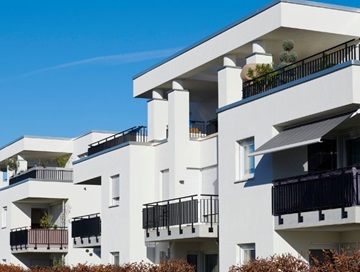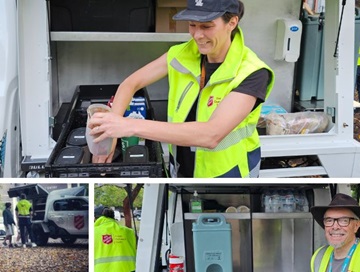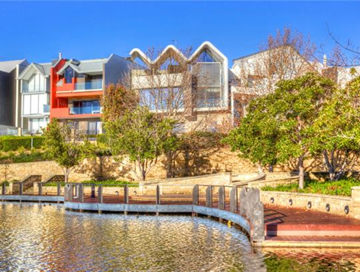If you’re new to property investment, or just looking to expand your portfolio, it’s good to understand what a rental yield is and what it means for your investment.
What is a rental yield?
The rental yield is the measure of how much rental income an asset is generating, as a percentage of the property's value. The rental yield is useful for indicating the potential return of an investment property. A high yield means good annual returns for investors.
To put things into perspective, the rental yield for Perth houses currently sits at 4.5 per cent based on the Perth overall median house rent price of $450 per week and median house price of $525,000.
We spoke with CEO and Licensee of property management company, We Love Rentals, Brendan Leahy, to get his tips and insights into how to increase your rental property yield.
Brendan Leahy’s eight tips to help increase your rental yield
1. Be very critical about everything you spend on
Shop around for quotes whenever you have to buy products or services regularly to service your portfolio. Don't be afraid to seek a sharper quote on insurance, for example.
If you haven't yet bought, ensure that you get the best mortgage deal that you can find, and always be on the lookout for new products that may come online.
2. Be aware of trends
For example, people may now want to work from home a lot more as countries emerge from the pandemic. Make your properties more attractive by sectioning off a space that could be used as an office. If you include furniture in your package, add a desk and comfortable chair.
Always ensure that the property has access to the highest speed internet possible, as this is non-negotiable these days. Furthermore, make sure that you highlight these features when you market your properties. Certainly, there may be a small expenditure upfront, but you will attract more interest.
3. Make your properties more attractive by being a very flexible rental provider
For example, considering pets will help your rental appeal to a bigger pool of great tenants (most Australian families have at least one pet and are willing to pay a little more for a rental that will accommodate them).
Allow tenants to decorate within reason, provided they return everything to its previous condition when they leave. Again, make sure that you market your flexibility, and you will elevate above other rental providers who may be seen as uncompromising.
4. Think sustainability
While the pandemic may have been front of mind for many recently, climate control has also been a scorching topic. How sustainable are your rental properties? Focusing on this area will undoubtedly strengthen your appeal with tenants who are passionate about this issue.
Furthermore, as you improve the energy efficiency rating of each property through insulation or other changes, you will also lower your energy bills.
5. Capitalise on street appeal
When potential tenants view the street appeal of your rental it sets the standard for what they will expect once they walk inside. If they arrive at your home and see unkempt and/or dead lawns, and overgrown gardens, they're going to assume the interior of the home is in a similar condition.
Before you advertise your home for rent, spend a Sunday afternoon weeding, mowing the lawns, and mulching your garden beds, and you’ll have a much better chance of attracting your ideal tenant.
6. Opt for low maintenance garden
Most people are time poor, and will prefer not to spend every weekend maintaining the front and backyard. If you can, avoid plants or trees that require lots of pruning or watering and choose some easy-care natives instead.
This will improve the rentability of your investment and keep your maintenance costs down.
7. Invest in extra security
Depending on the area, features like an alarm, security screens and a visible camera can both protect your rental and boost your yield. Break-ins are an unfortunate reality regardless of where you live - particularly if a property is located close to the train station, an alleyway or in a cul-de-sac.
Tenants that have experienced home invasions or car break-ins before will happily pay more to enhance their safety and well-being.
8. Keep your vacancy periods down
You can avoid this by communicating with current tenants and ensuring they are as happy as possible. If they do have to leave for other reasons, regular communication may give you more advance notice so that you can line up another tenant and, ideally, without any gap.
It may be worthwhile considering incentives to either keep the current tenant in place or attract a new one without any delay. Even though this may be counterintuitive, it may help you avoid an extended period with no income at all – and work out better in the long run.
Rent rises are an example of this. Putting the rent up by $20 per week will get you an extra $1,040 per year, but if it means you lose a great tenant you may end up with less rental yield. By the time you’ve paid for a final bond inspection, re-advertising fees and an updated PCR, you will have spent that extra rent profit, and taken a risk on a new tenant. Whereas if you negotiate a smaller rent rise with your current tenants so they stay on, like $10 per week, you can gain the extra $520 to your yield that is yours to keep.
More information
For more information, read our beginner’s guide to property investment.
.tmb-imgwidgetm.jpg?sfvrsn=5c1620e7_1)


.tmb-rcarousel.jpg?sfvrsn=b4b9111_1)






.tmb-rcarousel.jpg?sfvrsn=d38b03f0_1)